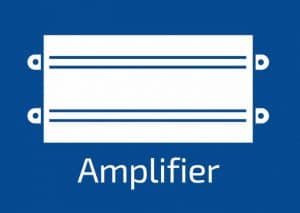
Best Car Amplifiers of 2021
| Model | Maximum wattage | Channels | Class | |
|---|---|---|---|---|
| JL Audio JX1000/1D (Editor’s Choice) | 1,000 | 4-Channel, Monoblock | Class D | Check Price |
| Alpine MRV-F300 | 200 | 4-Channel, Monoblock | Class D | Check Price |
| Rockford Fosgate PBR300X4 | 300 | 4-Channel, Monoblock | Class BR | Check Price |
| Hifonics ZRX1016.4 | 1,000 | 4-Channel, Monoblock | Class D | Check Price |
| Pyle 2.1 Bluetooth Receiver | 1,000 | 4-Channel, Monoblock | Class AB | Check Price |
1. JL Audio JX1000/1D 1000 Watt RMS Monoblock Class D Car Amplifier – Best Quality Sound
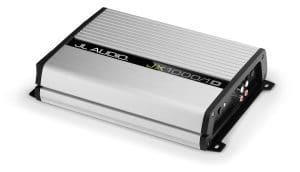
Smooth Sounds
Another perk of this affordable system is the smooth start. This ensures that the amplification system is able to turn on without any undesirable sounds upon turning on a vehicle or an electric overload. It is also important to note that the system has an unregulated PWM switch, which ensures the audio will continue to run as long as the voltage doesn’t drop below operable levels. In the case that it does, the amplifier will shut off by going into a safe mode.
Recommendation
At over $200, JL Audio’s 100-watt RMS Monoblock Class D car amplifier is quite an investment. Nevertheless, it is well worth the money. It boasts a rating of 500 watts RMS at 4 ohms, 750 watts RMS at 3 ohms, and 1,000 watts RMS at 2 ohms, making it compatible with a wide range of subs and speakers.
However, it is important to note whether or not your vehicle’s battery is capable of providing an adequate amount of power to it. Nevertheless, we highly recommend this to any and all vehicle owners.
- The amp is capable of powering multiple large subwoofers and speakers thanks to the four 500 watt RMS channels
- The amp features an unregulated PWM switch, which means that the power rating may change depending on the battery it is connected to
- This amp is priced affordably compared to similar models that are currently on the market
- The amp features a low-pass cutoff filter. This creates a unified bandwidth and impedance rating, drastically improving the quality of sound
- The device offers a 12 dB bass boost, increasing the gain of those low thumping frequencies we music lovers cannot do without
- A few customers have reported experiencing subpar sound quality with these amps
2. Alpine MRV-F300 4-Channel Car Amplifier, 50 Watts RMS x 4 – Best Small Amplifier
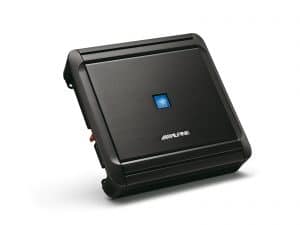
Affordable and Compatible
Beyond that, the device features four-channel optional speaker inputs that allow users to connect to a combination of factory original and aftermarket car radio parts.
Recommendation
We highly recommend the Alpine MRV-F300 50-watt 4-channel car amplifier to owners of compact vehicles. The chassis weighs just less than 5 pounds. Meanwhile, it is extremely thin and features a sleek design. The black finish also blends well in most cars. Beyond that, we love the snap-on terminal covers that prevent wires from loosening during bumpy rides. Not to mention, it provides up 50 watts RMS per channel. Plus, the sound production could not be clearer nor more distortion-free. It is important to note that at less than $150, this aftermarket amplifier is also extremely affordable.
- The device features a 4-channel speaker inputs with a 50 to 75 watt RMS rating
- This amp is 40-percent smaller than the third generation Alpine amplifier
- It boasts a class D energy efficiency label
- Boasts secure snap-on terminal covers that make for a simple installation
- Each amplifier is individually tested for its power levels. These results are provided to consumers upon purchase
- The amp overpowers occasionally (resulting in an automatic shutoff)
- Some customers have reported minimal factory defects that are noticeable upon arrival
3. Rockford Fosgate PBR300X4 Punch BRT 300-Watt Ultra-compact 4-Channel Amplifier – Best Amplifier for Bass
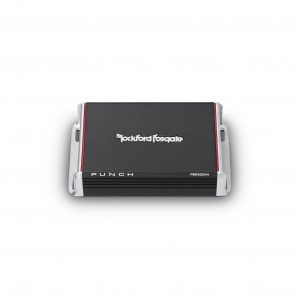
Elongated Warranty and Lifetime expectancy
Another feature is the NOMAD computer system, which protects your stereo system from speaker shorts and low impedance ratings. Finally, the system connects via an easy to use block harness system.
Recommendation
We highly recommend the Rockford for music lovers with minimal space. The device measures 1.52 inches high, 4.25 inches wide, and 6.75 inches long. Meanwhile, it barely weighs over 3 pounds. It boasts easy to read power and setting indicators. What’s more, it offers around 75 watts RMS for each of its four channels. You also have the choice between low-level and high-level signal inputs, making it compatible with a wide range of aftermarket gear. Because of its size, this is a great selection for motorcycles, ATVs, and cars with limited cab space.
- The amp offers four channel outputs with 75 watts RMS per channel
- Thanks to the low-level and high-level signal inputs, this amp connects to most OEM parts
- The device boasts an impressive bass output with minimal distortion and popping
- It is backed by a generous 1-year manufacturer’s warranty
- It can connect via a block harness system or dual RCA cables
- Some customers claim that the customer service department is difficult to deal with
- The device offers lower power than desired by some vehicle owners
4. Hifonics ZRX1016.4 Zeus Car Audio Amplifier, 4-Channel 1000-Watt – Best Around 100 Bucks
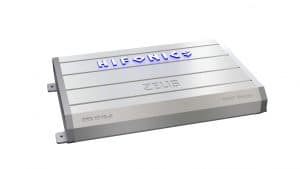
Superior Electronics
The Hifonics audio amplifier offers sophisticated power protection. This includes DC, short circuit, thermal, and overload protection. Together, these additions give consumers safety and reassurance. Meanwhile, it is important to note that the Zeus system only possesses low-level (RCA) inputs and outputs. While we much prefer the quality of RCA sound, this means the device may not be compatible with factory-installed audio equipment.
Recommendation
We highly recommend this amp to vehicle owners looking to improve their car audio systems within a tight budget. The amp costs just over $100 and offers some of the most sophisticated sound amplification on the market. The four-channel device boasts 250 watts RMS per channel or 500 watts RMS when split amongst just two channels. Keep in mind that the amp is pretty large. It weighs around 10 pounds. Its dimensions are 15.7 inches, by 2.4 inches, by 10 inches. The high-pass filter variable is between 60 Hz and 1,200 Hz. Meanwhile, the low-pass filter variable is between 30 and 250 Hz.
- There are two, three, and four channel configurations, with 125 to 250 watts RMS per channel
- There is minimal distortion and barely any popping in low level (bass) frequencies
- The amp features FR, low-pass, and high-pass filters for more refined audio production
- There are two ohm-stable features
- The amp features a user-friendly calibration system
- Thanks to the built-in fuse, the amp doesn’t overtax a preexisting system or any extra components
- The amp is rather large and heavy
- The amp produces minimal buzzing and high volumes
5. Pyle’s 2.1 Bluetooth Marine Amplifier Receiver – Best Four-channel for the Money
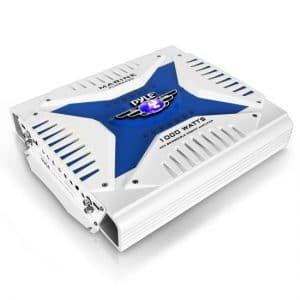
Visual Indicators and Smart Electronics
LED lights serve as convenient indicators of problems with the electric system as well as any ongoing short circuits. This is imperative, as the amplifier runs on a maximum of 1,000 watts of power. Meanwhile, the device also utilizes a MOSFET power circuit. Beyond that, it boasts GAIN level controls that offer between 4 and 8 Ohm adjustments.
Recommendation
On the downside, this is yet another heavyset amplifier. It weighs over 10 pounds. Meanwhile, it is 12 inches long, 10.9 inches wide, and 2.7 inches tall. So long as you have an adequate chair or trunk clearance, we recommend this all-weather bass-pumping beast for all of your vehicle audio needs.
- The device is both waterproof and weatherproof
- It offers Bluetooth connectivity with a range of 25 feet
- It boasts reliable short circuit protection
- The amp offers a 1,000-watt power maximum for one channel
- It boasts a MOSFET power supply circuit
- Some customers have reported having issues with connectivity
- The system is quite heavy and large, making it incompatible with some smaller vehicles
Best Car Amplifiers – Buyer’s Guide
How to Choose an Amplifier for Your Car
Car amplifier descriptions can get a little confusing. In fact, many contain combinations of numbers and acronyms. So, we’ll start by giving you the rundown on these abbreviated ratings.
Maximum Voltage
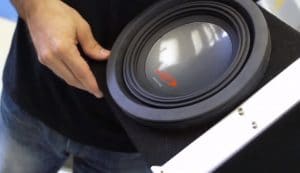
Gain
An amplifier with gain adjustment allows users to adjust the amount of power sent from the output of the amplifier to the input of a receiver. This setting can be used to reduce distortion. It can also be used as a way of preventing speaker blowouts.
Channels
As we mentioned before, amplifiers offer a designated amount of voltage (or watts) to each channel. Mono, two, three, and four-channel amplifiers offer a variety of pairing options, including the ability to connect them to OEM speaker and subwoofers. For example, a two channel amp can easily be paired with a pair of speakers for a fast and easy setup. For dynamic audio setups, with subwoofers and additional OEM parts, require additional channels.
Mounting System
There are a few options when it comes to mounting your amplifier, but most vehicle owners choose to place it under a front seat or in the trunk (particularly out of sight). Where ever an amplifier is mounted, it is going to need breathing room. It is important to note that even the most powerful heat dissipation systems can fail in too tight spaces.
Fuses
Keep in mind that most amplifiers don’t come with the necessary wiring systems needed to transmit a signal from one device to the other. You’ll need to access how much wire you need based on the location of the amp. You also need to run wiring from your car battery to power the device. It is also a good idea to make sure the connectors are easy to secure, paving the way for a somewhat painless installation process.
Compatibility
It’s important to match your amp up to your subwoofers. This is called impedance (our the rate of electricity movement that is measured in ohms), and it is imperative to both the longevity, safety, and productivity of your equipment. This number varies depending on whether an amp boasts series or parallel wiring. Ensure that your impedance calculations are safe for your speakers and subs.
Price
To let the prospect of a budget bog you down too much. There are plenty of affordable amps on the market, many of which are listed above. In the case of aftermarket stereo equipment, speakers and subwoofers are what are going to really cost you. Plan to budget between $100 and $300 on your car amplifier and expect quality sound.
Heat Sinks
Most car amplifiers boast heavy metal cases to help dissipate excess heat. Others boast breathable shells and thermal absorption components that help make the devices safer and less prone to fire. Oftentimes, amps have ridged or finned cases to increase the amount of surface area for the heat to spread across.
Filters
Some car amplifiers possess low-pass and/or high-pass filters. Low-pass filters reject frequencies that are higher than a certain amount and accentuate the lower ones. They are great for improving the quality of bass. Meanwhile, high-pass filters do the opposite. Together, they help to reduce distortion.
Input Terminals
You also need to pay close attention to what type of inputs your amp has. Most consumers prefer speaker-level (high-level) inputs that allow them to connect directly to their factory-installed speakers. However, RCA (low-level) inputs offer an even higher quality of sound. Though, these are mostly compatible with aftermarket stereo equipment. Some of the amps we reviewed posses snap-on terminals or secure ports that ensure a live wire isn’t going to come loose every time you ride over a bump or dip in the road.
Final Reminders
If you’re new to aftermarket audio gear, building a complete system that works well and is efficient may seem unattainable. To avoid common mishaps, decide upon your speakers, subs, and amplifier before making any final purchases. Always ensure that they are compatible too. It is important to remember that, in the end, the extra time spent cross-referencing ratings will result in clearer sound.
Final Thoughts
If you’re looking to improve the sound quality in your vehicle, there is no better way to start than by purchasing an aftermarket amplifier. These nifty devices are essential for powering up speaker and subwoofer upgrades. While we cannot deny the quality sound of the JL Audio, the Hifonics amp is a great choice for individuals on a tight budget. Meanwhile, the Alpine amp is ideal for tight spaces, such as motorcycles, ATVs, and two-seater sports cars. Now that you’ve educated yourself on all the must-have car amps, it’s just about time to seek out some crystal-clear speakers, install some bass-boosting subs, and finally take that cross-country road trip you’ve been blabbing about.
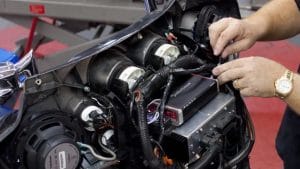

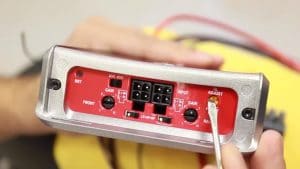
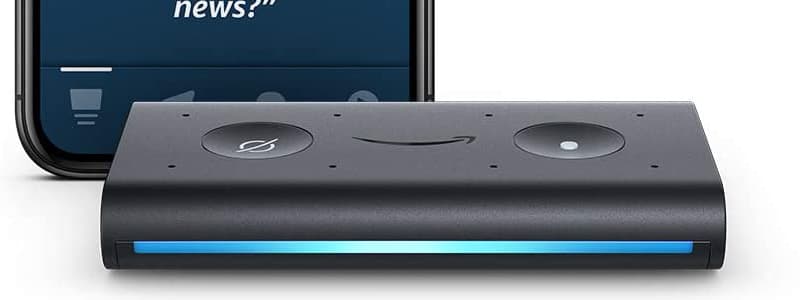
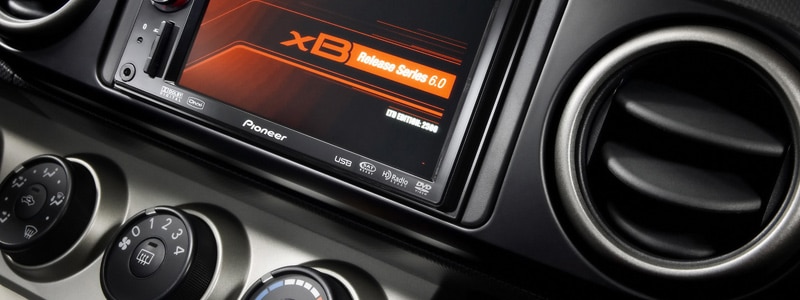
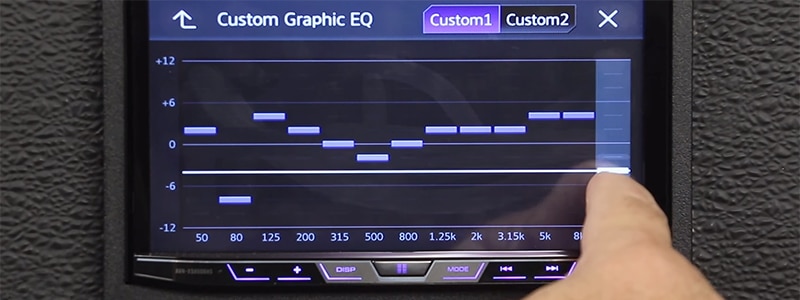
Leave a Reply